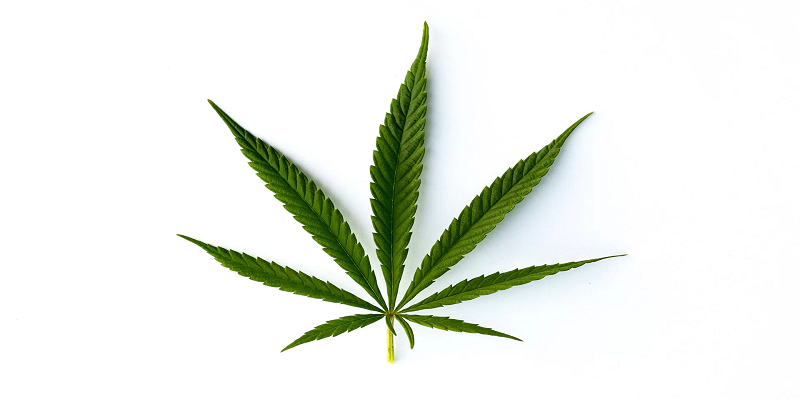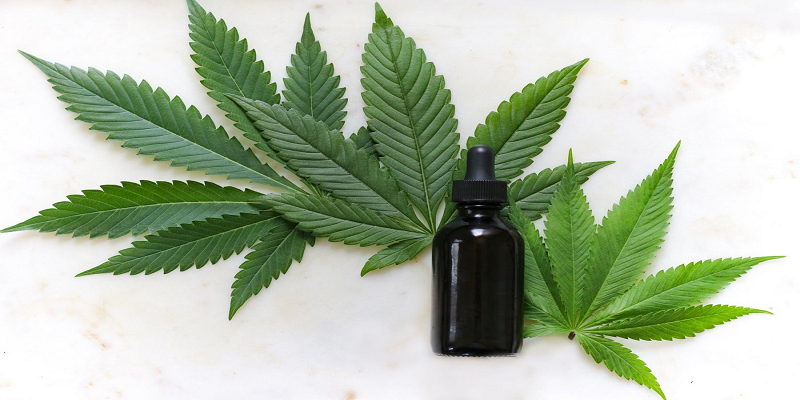Currently Empty: $0.00
Sativa vs Indica vs Hybrid Strains: What to Expect | Green Dank
Things To Think About:
Sativa Strain and Indica Strain, the two primary varieties of cannabis, are utilized for both therapeutic and recreational purposes. Sativas are renowned for their “head high,” an energetic impact that can boost creativity and focus while lowering anxiety and stress. Hybrid Strains are frequently linked to all-encompassing effects, such as promoting profound relaxation and alleviating sleeplessness.
Although there is little research on these impacts, it seems these plants have more in common than first believed. Indica, Sativa, and Hybrid Strain designations are no longer widely used in the cannabis market. Instead, the various “strains” or, more accurately, “chemovars” are now categorized as follows:
- High THC
- THC/CBD Combined
- High CBD
Since the term “strain” is frequently used to refer to bacteria and viruses, the cannabis industry is increasingly replacing the word “strains” with chemovars (chemical variants).
What Should You Look For To Comprehend The Impacts Of Strain?
It’s a common misconception that Sativa strains are more motivating and stimulating while Indica Strains are more tranquil and relaxing.
Even among the same species of cannabis, different plants have different effects. It all depends on the chemical makeup of the plant and the growing method employed.
The many plant types are frequently divided into distinct chemovars or breeds.
Chemovars cannabinoid and terpene compositions serve as distinguishing characteristics. The user will get the greatest information from this “cannabinoid profile” to help them choose the optimal chemovar.
Relying solely on names does not give the user enough information to select the appropriate profile. These substances determine the total effects of the chemovar.
Cannabinoids:
Numerous chemical substances known as cannabinoids are present in cannabis plants. The majority of the consequences of cannabis use, both good and bad, are produced by these naturally occurring substances.
Tetrahydrocannabinol (THC) and cannabidiol (CBD), along with a few other less prevalent cannabinoids, have been identified as the two primary cannabinoids. However, scientists are still unsure of what cannabinoids do.
These Consist Of The Following:
- THC: The primary psychotropic ingredient in cannabis plants is THC. It’s what causes the “high” or euphoric feeling that comes with cannabis consumption. As producers attempt to produce Hybrid Strains with a higher concentration of the substance, THC levels have been rising.
- CBD: CBD is neither debilitating nor euphoric. There is no resulting “high” However. It may have various physiologic advantages, including alleviating migraine symptoms and lowering pain and nausea.
- CBN: Cannabinol (CBN) treats neurological diseases like epilepsy, seizures, and uncontrollable muscle stiffness while reducing their symptoms and adverse effects.
- THCA: While eerily identical to THC, tetrahydrocannabinol acid (THCA) has no psychotropic side effects. It may lessen inflammation brought on by autoimmune disorders, including rheumatoid arthritis. Additionally, it might alleviate the symptoms of neurological diseases, including ALS and Parkinson’s disease.
- CBG: Cannabigerol (CBG) believes in helping lessen anxiety and the signs and symptoms of depression, PTSD, and obsessive-compulsive disorder.
Terpenes:
Much focus is placed on how much THC and CBD are present in a particular strain, but a more recent study indicates that terpenes may have an even more significant impact.
Another naturally occurring substance in the cannabis plant is terpenes. The terpenes in the plant have a direct impact on how it smells. They might also affect the results that particular strains have.
Typical Terpenes Consist of:
- Bisabolol: The terpene bisabolol, which has chamomile and tea tree oil overtones, is supposed to help lessen inflammation and irritation. It might have antibacterial and painkilling properties.
- Caryophyllene: The spicy, peppery compound may lessen anxiety, ease depressive symptoms, and heal ulcers.
- Linalool: With its flowery undertones, linalool is thought to help with mood enhancement and relaxation.
- Myrcene: The most prevalent terpene, this herbal, earthy molecule, may aid in improving sleep quality by lowering anxiety and insomnia.
- Ocimene: There are notes of basil, mango, and parsley produced by this terpene. In addition to reducing congestion, it may also protect against bacteria and viruses.
- Pinene: This terpene emits a powerful pine fragrance, as its name would imply. It might improve memory, lessen discomfort, and lessen some of the less desirable effects of high THC sativa strains, like nausea and difficulties with coordination.
- Terpinolene: Cannabis containing this chemical could have an apple, cumin, and coniferous scent. It might have calming, antimicrobial, and antifungal effects.
- Limonene: This terpene gives out lively, citrusy scents. It is supposed to lessen stress and elevate mood.
- Humulene: Like hops or cloves, this terpene has a strong woody and earthy aroma. Cannabis strains that contain this chemical may aid in decreasing inflammation.
- Eucalyptol: This molecule revitalizes and refreshes with eucalyptus and tea tree oil undertones. Additionally, it might help combat bacteria and reduce inflammation.
Sativa Strain In-Depth:

- Origin: Cannabis sativa originates from hot, arid areas with long sunlight days. These include parts of Western Asia, Southeast Asia, Central America, and Africa.
- Plant description: Sativa plants have long, slender leaves that resemble fingers. They mature more slowly than some other varieties of cannabis and can reach heights of more than 12 feet.
- Typical CBD to THC ratio: Sativa often contains lower CBD concentrations and higher THC concentrations.
- Commonly associated effects of use: Effects of Sativa use that are frequently mentioned include a “mind high,” or an energetic, anxiety-reducing impact. Sativa-dominant strains may make you feel creative and productive rather than rested and drowsy.
- Daytime or nighttime use: Sativa can be used either during the day or at night because of its energizing effects.
- Popular strains: Acapulco Gold, Panama Red, and Durban Poison are three widely used Sativa varieties.
Indica Strain In-Depth:

- Origin: Cannabis indica is indigenous to Turkey, Afghanistan, India, and Pakistan. The plants have adapted to the Hindu Kush mountains’ frequently arid, unstable climate.
- Plant description: Indica plants have bushy leaves and thick, broad leaves that are short and stocky. They generate more buds per plant and grow more quickly than Sativa.
- Typical CBD to THC ratio: Normal CBD to THC ratio: Indica strains frequently contain higher CBD concentrations, although the THC content isn’t always lower.
- Commonly associated effects of use: Indica is prized for its incredibly calming properties. Additionally, it could lessen pain and nausea while boosting appetite.
- Daytime or nighttime use: Because indica has strong sedative properties, it is best ingested at night.
- Popular strains: Three widely used indica strains are Granddaddy Purple, Afghan Kush, and Hindu Kush.
Hybrid Strain In-Depth:

Cannabis breeders create new, original strains yearly from various parent plant combinations. These cannabis hybrids are frequently raised to achieve particular effects.
- Origin: Sativa and indica strains are frequently combined to create hybrids, which are then produced in greenhouses or farms.
- Plant description: The mix of their parent plants influences hybrid strains’ appearance.
- Typical CBD to THC ratio: Although many hybrid cannabis plants are bred to yield more THC, each variety has a different proportion of the two cannabinoids.
- Commonly associated effects of use: Farmers and producers choose Hybrid Strains for their distinctive products. They can include everything from alleviating anxiety and stress to easing radiation or chemotherapy side effects.
- Daytime or nighttime use: Use throughout the day or night will depend on the Hybrid Strains primary effects.
- Popular strains: Hybrids are often categorized as balanced, Sativa-dominant (or Sativa- Dom), or indica-dominant (or Indica-Dom). Pineapple Express, Trainwreck, and Blue Dream Strain sativa or indica are a few well-known hybrids.
Risks and Adverse Effects That Could Occur:
Cannabis use is frequently linked to potential advantages but can also result in adverse side effects.
This Comprises:
- Dry Eyes, Dry Mouth
- Dizziness \ Anxiety
- Paranoia \ Lethargy
- Higher Heart Rate
- Reduction in Blood Pressure
THC, rather than CBD or other cannabinoids, is responsible for most of these effects. However, adverse effects are possible with any cannabis product.
Your risk for side effects may also increase depending on how it is used.
For instance, cannabis vaping or smoking can irritate your airways and lungs. Coughing and respiratory issues could result from this.
Gummies and cookies are oral cannabis preparations less likely to impact your respiratory system.
However, ingested cannabis, primarily Tetrahydrocannabinol (THC), is more effective because it converts to 11-hydroxy-THC, which results in higher euphoric effects that might last for several days or even hours in some people. This is true even if the products are noticed more gradually.
Strains To Consider For Certain Conditions:
| Strain | Category | CBD | THC | Conditions |
| Acapulco Gold | Sativa Strains | 0.1% | 15–23% | Fatigue, stress, nausea, pain |
| Blue Dream | Hybrid Strains | <1% | 30% | Pain, cramps, inflammation, insomnia, mental fog, PTSD |
| Purple Kush | Indica Strains | <1% | 17–22% | Chronic pain, muscle spasms, insomnia |
| Sour Diesel | Sativa Strains | <1% | 20–22% | Fatigue, stress, acute pain, mental fog, anxiety, PTSD |
| Bubba Kush | Indica Strains | <1% | 14–25% | Insomnia, acute pain, nausea, low appetite, PTSD |
| Granddaddy Purple | Indica Strains | <0.1% | 17–23% | Low appetite, restless leg syndrome, insomnia |
| Afghan Kush | Indica Strains | 6% | 16–21% | Acute pain, insomnia, low appetite |
| LA Confidential | Indica Strains | 0.3% | 16–20% | Inflammation, pain, stress |
| Maui Waui | Sativa Strains | 0.55% | 13–19% | Fatigue, depression |
| Golden Goat | Hybrid Strains | 1% | 23% | Depression, anxiety, mental fog, low energy |
| Northern Lights | Indica Strains | 0.1% | 16% | Pain, mood disorders, insomnia, low appetite |
| White Widow | Hybrid Strains | <1% | 12–20% | Low mood, mental fog, social anxiety |
| Super Silver Haze | Sativa Strains | <0.1% | 16% | Stress, anxiety, mental fog, low energy |
| Pineapple Express | Hybrid Strains | <0.1% | 23% | Mental fog, acute pain, social anxiety |
| Supernatural | Sativa Strains | <1% | 22% | Migraine, glaucoma, headaches, low moods |
Remember that different growers will produce different amounts of cannabinoids and terpenes, and while some strains may be beneficial for particular conditions, your own experience may differ.
How To Pick The Best Item For You:
Keep the following factors in mind as you search for the ideal cannabis product for you:
- Know what you want to accomplish. You can reduce your alternatives by thinking about what you’re attempting to feel or treat. Discuss your cannabis use objectives with the staff member at the dispensary, including any plans to alleviate insomnia, lessen anxiety, or boost vitality.
- Recognize your tolerance. Some strains are regarded as “entry-level,” including Pineapple Express. Usually, their effects are moderate and minor. For a first-time user, strains with higher THC concentrations can be too potent.
- Think about your medical background. Despite being a natural product, cannabis has potent effects. It would help to consider potential interactions with current medical conditions and drugs before experimenting with cannabis. Discuss the specific advantages and potential concerns with your doctor or another healthcare provider when in doubt.
- Select your preferred consumption strategy. Each cannabis consumption method has advantages and disadvantages. You may experience benefits more rapidly if you smoke or vape cannabis; however, it might irritate your airways and lungs. Although gummies, chewable, and meals may be more tolerable, their effects may last longer and be considerably more potent than inhalation.
Legality:
Not all places have legal cannabis. All cannabis-related items were prohibited in most of the US a few years ago. Numerous states now permit the use of marijuana for either medical or recreational use.
Likewise, CBD laws are changing. Some states permit its use for medical reasons, but they strictly control the source to stop CBD products that contain THC.
You should be familiar with the regulations in your state before attempting to buy or consume cannabis. Keep in mind that marijuana continues to be prohibited by federal law. You can be in legal trouble if unaware of the local laws.
Different laws can govern you if you live outside of the US.





